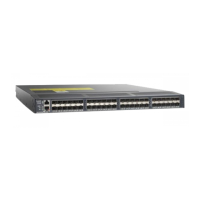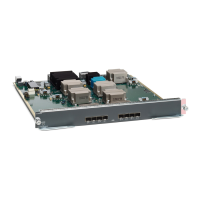-8
Cisco ME 3800X and ME 3600X Switch Command Reference
OL-28238-01
Chapter
snmp-server host
snmp-server host
To specify the recipient (host) of a Simple Network Management Protocol (SNMP) notification
operation, use the snmp-server host command in global configuration mode. To remove the specified
host, use the no form of this command.
snmp-server host host-addr [informs | traps] [version {1 | 2c | 3 {auth | noauth| priv}] [vrf
vrf-instance] {community-string [notification-type]}
no snmp-server host host-addr [informs | traps] [version {1 | 2c | 3 {auth | noauth | priv}] [vrf
vrf-instance] community-string
Syntax Description host-addr Name or Internet address of the host (the targeted recipient).
udp-port port (Optional) Configures the User Datagram Protocol (UDP) port number of the host
to receive the traps. The range is from 0 to 65535.
informs | traps (Optional) Sends SNMP traps or informs to this host.
version 1 | 2c | 3 (Optional) Version of the SNMP used to send the traps.
These keywords are supported:
1—SNMPv1. This option is not available with informs.
2c—SNMPv2C.
3—SNMPv3. These optional keywords can follow the Version 3 keyword:
• auth (Optional). Enables Message Digest 5 (MD5) and Secure Hash
Algorithm (SHA) packet authentication.
• noauth (Default). The noAuthNoPriv security level. This is the default if the
[auth | noauth | priv] keyword choice is not specified.
• priv (Optional). Enables Data Encryption Standard (DES) packet encryption
(also called privacy).
Note The priv keyword is available only when the cryptographic (encrypted)
software image is installed.
vrf vrf-instance (Optional) Virtual private network (VPN) routing instance and name for this host.
community-string Password-like community string sent with the notification operation. Though you
can set this string by using the snmp-server host command, we recommend that
you define this string by using the snmp-server community global configuration
command before using the snmp-server host command.
Note The @ symbol is used for delimiting the context information. Avoid using
the @ symbol as part of the SNMP community string when configuring
this command.

